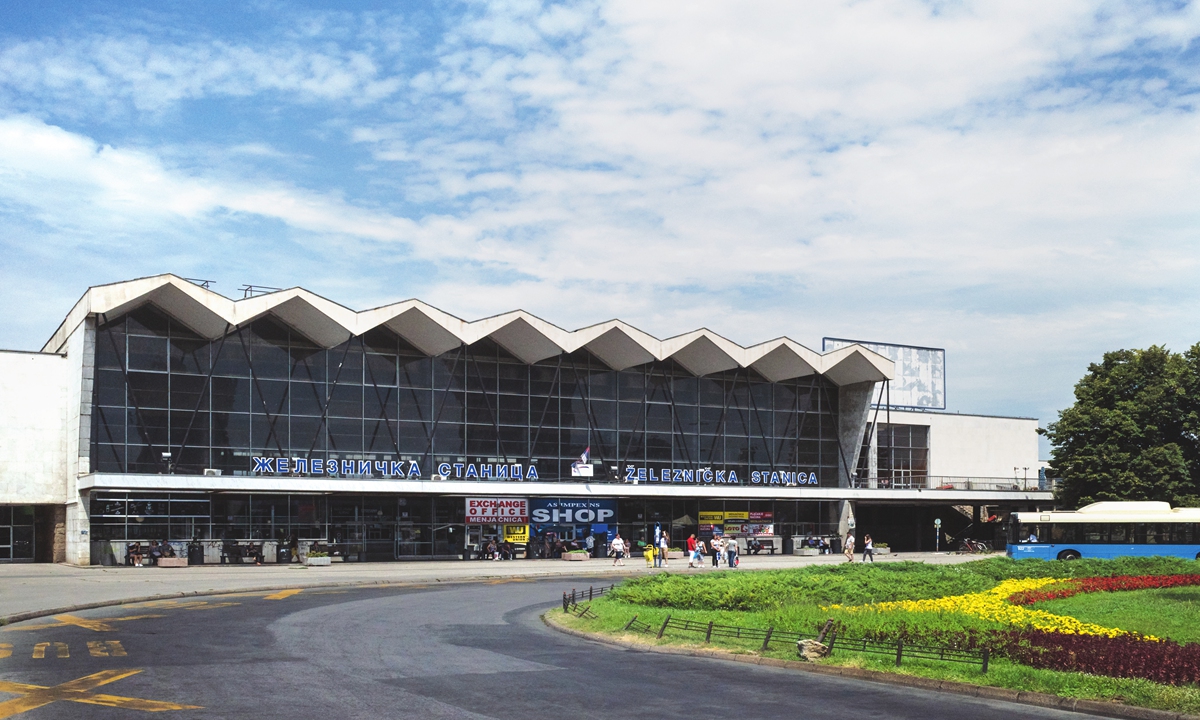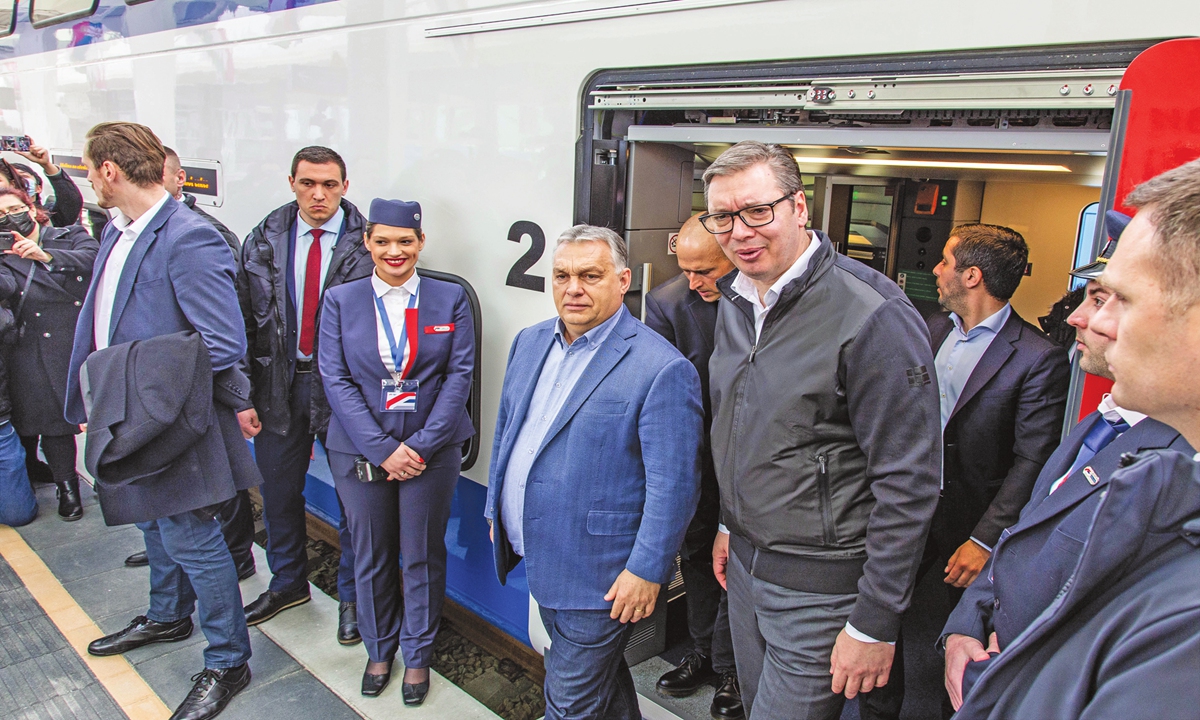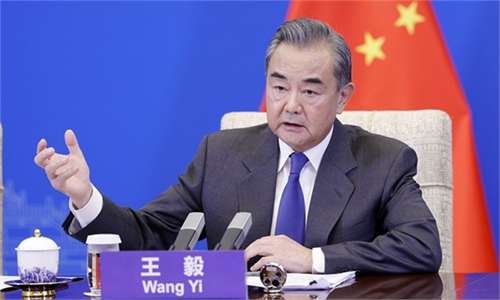BRI projects in the fast lane across CEECs amid headwinds, geopolitical uncertainty

Novi Sad railway station in Serbia Photo: VCG
Belt and Road Initiative (BRI) projects in Central and Eastern European countries (CEECs) - providing jobs to local communities and increasing infrastructure connectivity of the region - have been gaining momentum over the past week, with industry players looking forward to another year of cooperation and delivery between China and CEE countries.Smooth progress in the beginning stages of 2022 fully reflects the resilient trade ties between the two partners amid pandemic uncertainty and Lithuania's continuous provocation, observers said, while also calling for a joint exploration of new impetus for upgrading of relations as China-CEEC cooperation mechanism welcomes its 10th anniversary.
Projects in full swing
Latest recent milestone was in Serbia on March 19, where an inauguration ceremony was held for Belgrade-Novi Sad section of the Belgrade-Budapest railway - a flagship project designed to demonstrate cooperation between China and Central and Eastern Europe.
The railway is an important project for the European transportation corridor as well as for the China-Europe land-sea supply chains.
The 80-kilometer section of track, which links Belgrade and Novi Sad, the capital and second-largest city of Serbia, is part of the 341.7-kilometer Belgrade-Budapest railway, which has a designed speed of 200 kilometers per hour, according to a news release on the website of China's Embassy in Serbia.
The Belgrade-Novi Sad section is composed of two sections, one built by China Communications Construction as well as China Railway International in the form of engineering, procurement, and construction contracts, according to the statement.
Chinese companies have also participated in the construction of Novi Sad railway station, which played a key role in the opening of the line, a spokesperson from the China Civil Engineering Construction Corporation, said in a statement sent to the Global Times on Wednesday.
The spokesperson noted that a number of difficulties had been encountered since the completion of the first pile on November 16 last year. "The raging epidemic, restricted cross-border movement of personnel, tight construction time, and shortage of resource elements, all posed challenges."
"Our two companies quickly coordinated resources, became familiar with the local construction market standards and construction environment, carefully organized, strictly assessed the process, firmly pushed forward the schedule to ensure the timely and successful opening of the line," the spokesperson said.
About 200 people including Serbian President Aleksandar Vucic and Hungarian Prime Minister Viktor Orban rode the first train on the section at the Belgrade railway station to mark its opening. Just 33 minutes later, the train arrived at the station at Novi Sad to a warm welcome by local residents.

Serbian President Aleksandar Vucic and Hungarian Prime Minister Viktor Orban ride the first train on the Belgrade-Novi Sad section at the Belgrade railway station on March 19, 2022. Photo: Xinhua
Wang Wenbin, a spokesperson from China's Foreign Ministry, said on Monday that the continuous progress of the Belgrade-Budapest railway is conducive to enhancing the passenger and cargo transportation capacity of local railroads, facilitating the travel of residents, and promoting the development of tourism and urbanization along the route.China welcomes all parties to participate in the BRI cooperation and contribute to the improvement of connectivity among countries in Central and Eastern Europe, Wang said.
In another sign of closer ties, just one day after the Belgrade-Novi Sad section became operational, officials from China and Serbia held a ceremony on Sunday to celebrate the start of construction of a section of the E763 Expressway, which is being built by China Road & Bridge Corp under China Communications Construction.
Entering the new year, aside from Serbia, a number of high-level BRI infrastructure projects are moving ahead in other CEE countries despite the pandemic and geopolitical uncertainties.
The Farish-Drenovo highway project, also known as the FD project, undertaken by PowerChina, which is progressing on schedule, is a further example.
On Monday, the North Macedonian Prime Minister Dimitar Kovačevski visited a construction site of the project,and praised the "China speed" shown in the project, according to a statement PowerChina sent to the Global Times on Wednesday.
The FD project is part of the Gradsko-Prilep highway, which officially entered construction on June 9, 2021. The road is one of the most important roads in North Macedonia and a key international route connecting the Balkans with the rest of Europe, the company said.
Trade boom
In addition to roads and bridges and railway connection, industry players told the Global Times that trade between China and CEE countries, especially the goods trade via China-Europe freight trains, has also seen a noticeable rise since the year begins.
"We saw an increasing volume of China-CEEC trade products transported by the China-Europe freight train compared with the same period last year," Tommy Tan, president of Shanghai EPU Supply Chain Management Co, an agent of China-Europe freight trains, told the Global Times on Wednesday.
Cross-border e-commerce businesses between China, Poland and Hungary along the China-Europe freight trains are becoming a highlight, featuring consumer and electronic products, Tan said. "We are still optimistic about the development of China-Europe freight trains in Central and Eastern Europe."
Industry insiders told the Global Times that the current Russia-Ukraine conflict is posing some challenges to China-Europe freight trains, but despite that the channel itself has not stopped operating - the railway between Europe to China via Poland, Belarus and Russia remains open.
"Businesses have felt the pressure from potential disruptions, but all the railway lines are operating normally, except those passing Ukraine, which represent only a fraction of cargo and have been detoured already," an industry insider told the Global Times, who asked to remain anonymous.
Meanwhile, government officials, railway service providers and international traders are putting in place contingency measures, for instance, some are seeking a new insurance that covers all potential risks, including war damage, to ensure smooth operation and trade flow of the China-Europe freight train, the insider said.
New impetus
The speed of progress demonstrates the resilience of cooperation between China and CEE countries, which has withstood the headwinds of pandemic as well as geopolitical uncertainty, Cui Hongjian, director of the Department of European Studies at the China Institute of International Studies, told the Global Times on Thursday.
Cui noted that Lithuania's provocation of political issues and liaison with a few politicians will indeed affect the atmosphere of cooperation between China and other CEE countries, but the impact to date has been limited.
Chinese officials have urged Lithuania to correct its mistakes and return to the right track of adhering to the One-China principle, advising the county to stop confusing right with wrong and cease its malicious hype, let alone trying to get other nations to join its acts against China.
"The vast majority of Central and Eastern European countries value their cooperation with China and abide by the basic principles. Moreover, China's appeal in Central and Eastern Europe has always primarily been economic and trade cooperation," Cui said.
Look ahead, China-CEEC cooperation is entering a new era, and all parties are looking for new impetus. China also needs to find new ways of cooperation, as well as coordinating the interests of all parties, the expert said.



